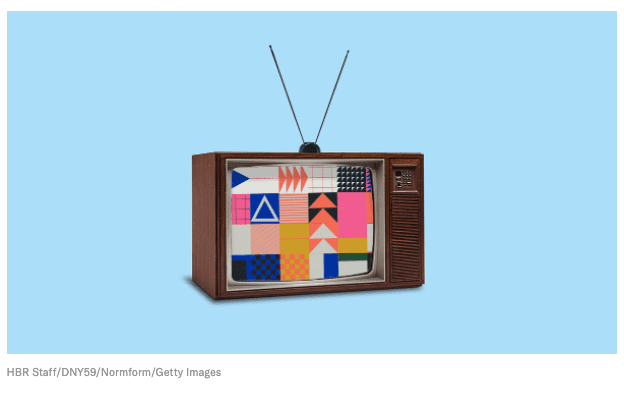Summary: Pundits have long predicted the demise of traditional advertising. However, it is alive and well and headed for growth for the first time in a decade. The authors explain seven factors driving this trend, including the ability of traditional ads to break through digital clutter, the decline in third-party cookies, and more.
Digital marketing technologies and their ecosystems have dominated growth in marketing budgets for over a decade. As consumers have shifted their attention from stationary media to perpetual media on the go, traditional advertising lost some of its appeal. In turn, marketers pivoted investments from television, radio, newspaper, events, and outdoor advertising to digital channels, from TikTok to TechTarget.
For the last decade, marketers have consistently predicted that their traditional advertising spending would decline. According to data from the 28th Edition of The CMO Survey, on average, marketers reported an annual decrease in traditional advertising spending of -1.4% between February 2012 and 2022, compared to an annual increase of 7.8% for overall marketing budgets during this same period.
However, recent evidence suggests that a shift is underway. In contrast to the historical trend, in August 2021 and February 2022, marketers predicted that traditional advertising spending would increase by 1.4% and 2.9%, respectively.
Consumer-facing companies are leading the shift, with B2C service companies predicting the largest increase in traditional advertising spending (+10.2%), followed by B2C product companies (+4.9%). Further, and somewhat ironically, companies that earn 100% of their sales through the internet are leading this inflection — predicting an 11.7% increase in traditional advertising spending over the next 12 months.
So, why is traditional advertising on the rise, and will the trend continue? We see seven drivers behind the shift.
1. Breaking through the digital clutter.
As consumers are spending most of their waking hours online, it seems they are becoming increasingly numb to conventional digital advertising and engagement. They report frustration and negative brand association with digital advertising clutter that prevents them from reading an article, watching a video, or browsing a website. For example, a HubSpot survey found that 57% of participants disliked ads that played before a video and 43% didn’t even watch them. As a result, marketers are looking for a way to cut through the noise.
Traditional ads, on the other hand, are experiencing increased engagement. MarketingSherpa reports that more than half of consumers often or always watch traditional television advertisements and read print advertisements that they receive in the mail from companies they are satisfied with. Indeed, research by Ebiquity suggests that traditional media channels — led by TV, radio, and print — outperform digital channels in terms of reach, attention, and engagement relative to costs. This performance differential is amplified as costs of online advertising have increased, especially when accounting for impression, click, and conversion fraud — whereas the costs of traditional media have fallen. It simply makes good economic sense to rebalance spending away from digital clutter.
2. Capitalizing on consumers’ trust in traditional advertising.
The same MarketingSherpa survey found that the top five most trusted advertising formats are all traditional, with customers trusting most print advertising (82%), television advertising (80%), direct mail advertising (76%), and radio advertising (71%) to make purchasing decisions. Similarly, it found that British and American consumers trust traditional advertising such as television, radio, and print more than social media advertising. As a result, marketers can use traditional advertising to build brand credibility and trust with jaded buyers.
3. Preparing for the decline of third-party cookies.
For years, marketers have relied on third-party cookies to track website visitors, using detailed data on their search preferences to improve the user experience and target consumers with personalized ad experiences. However, with Google phasing out the third-party cookie on Chrome browsers by late 2023 and Apple implementing changes to its iOS14 operating system, the death of third-party cookies is imminent. The CMO Survey found that 19.8% of companies invested more in traditional advertising (outside of online approaches) as a result.
Because of this inevitable change to the advertising landscape, marketers will be forced to rely on segmentation methods that hew closer to traditional advertising models. Without advanced data-driven targeting, marketers will need to refocus on extending their reach.
4…


